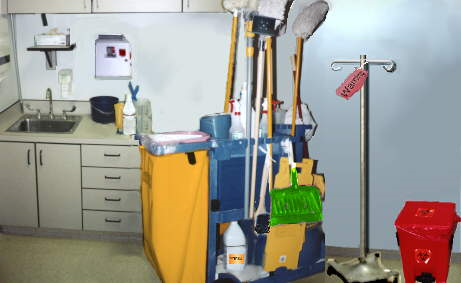
In their attempts to increase workplace efficiency, employers and employees alike sometimes forget about a few basic safety requirements. Most commonly overlooked is OSHAs Hazardous Communication (HAZCOM) standard which requires employers to provide employees with information concerning chemical hazards and the appropriate protective measures for safe handling practices. HazCom is an important part of work place safety because it provides employees with the basic understanding of the hazardous properties of the chemicals they may encounter, and more importantly, how exposure may be harmful to themselves or fellow workers.
One of the most memorable examples of efficiency gone wrong is what I experienced while training a group of Hispanic hotel workers. In the middle of teaching the concept of chemical incompatibility and its potential hazards, an employee stood up and said (in Spanish), I have been mixing la bomba (the bomb) for a while, and I have not experienced anything you have covered. I asked her what the bomb contained. She explained that, in order to save time, she would combine a number of surface and bathroom cleaners and degreasers in a spray bottle and would clean with that mixture. These chemicals were relatively safe if handled correctly, but by mixing them together, shed created a more hazardous chemical.

After I reviewed the Material Safety Data Sheets (MSDS) of these products with the group, I asked whether they had ever seen a MSDS; unluckily the answer was no. After the class, I was bombarded with comments such as no wonder my hands are so dry, or now I know why I have to wear the long rubber gloves. As the students and supervisors departed, they shook my hand and thanked me for the class and the employee behind the bomb realized that in an effort to do everything at once, she was doing more harm than good and exposing herself to an unnecessary danger. These types of engagements are what make the Environmental, Health and Safety profession worthwhile.
I frequently remind employers that some OSHA standards require companies to provide effective or adequate training, while others have stricter guidance. OSHAs newest interpretation of their training requirements clarifies and establishes the need to instruct its employees using both a language and vocabulary that the employees can understand.
What are the benefits of adequate, effective training? The employee benefits from increased awareness and avoidance of costly injuries. Meanwhile, the employer benefits from increased safety, lower workmans compensation costs, morale and regulatory compliance.
Additional information:
Occupational Asthma
Dermal Exposure
Building Maintenance - Cleaning Products
Hazardous Chemicals
The Household Product Database
Janitorial Product Risk Evaluation



